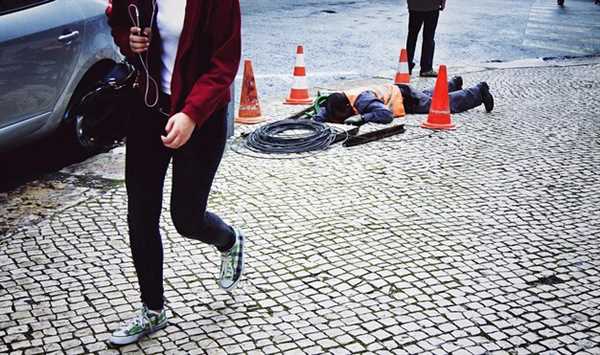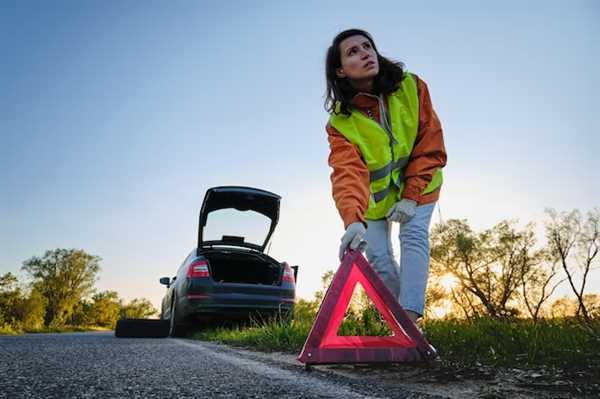
Assess your surroundings immediately. Ensure personal safety by moving to a secure location as soon as possible. Activate hazard lights to alert other drivers about your situation. If on a busy highway, consider using a reflective triangle or flares to enhance visibility.
Communication is vital. Notify local authorities about your predicament. Provide detailed information regarding your exact location and nature of the issue. If anyone is injured, relay this information to emergency responders to ensure prompt medical assistance.
Check your vehicle’s condition. Inspect for any mechanical failures or flat tires. If you’re equipped with tools and skills, perform basic troubleshooting to determine the cause. If you’re unable to resolve the issue, avoid risking your safety and wait for professional help.
Have essential items readily accessible. A well-stocked emergency kit can include essentials like a first-aid kit, flashlight, and non-perishable snacks. Staying prepared can facilitate a quicker response to unforeseen events.
Remain calm and patient while awaiting assistance. Understand that unexpected situations can happen to anyone, and keeping a level head is crucial in managing such instances effectively. Engaging with other drivers can also provide support, whether it’s sharing information or offering help.
How to Stay Calm and Assess Your Situation During a Breakdown

Take deep breaths to steady your nerves. This simple act can significantly reduce stress levels, helping you think more clearly. Focus on the immediate environment–check your surroundings for any potential hazards, such as traffic or obstacles.
If possible, safely move your vehicle to the side of the road. Turn on your hazard lights to alert other drivers. Exit the vehicle only if it is safe to do so, and stay clear of traffic.
Evaluate the condition of your vehicle. Inspect for visible signs of trouble, such as smoke or flat tires. If you have the necessary tools, attempt basic troubleshooting. Don’t hesitate to call for assistance if the issue seems beyond your capability.
Stay with your vehicle unless help is very close. It provides a safer space and is easier for rescue teams to locate you. Use your phone to call for roadside support if you can’t resolve the situation yourself.
Keep a calm demeanor in all interactions, whether with other drivers or emergency services. Clear communication will facilitate quicker assistance. Prepare to provide essential details, such as your location and the nature of the problem.
Key Actions to Take After an Accident on the Road
Immediately assess injuries. Check yourself and passengers to determine if anyone needs medical attention. If injuries are evident, avoid moving individuals unless there’s a risk of further danger, such as fire or oncoming traffic.
Call emergency services without delay. Provide clear details about the location, nature of injuries, and number of vehicles involved. Follow any instructions from the dispatcher.
Ensure safety by turning on hazard lights and placing warning triangles, if available. This alerts other drivers and minimizes the risk of secondary collisions.
Document the scene thoroughly. Take photos of the vehicles, license plates, and road conditions. Gather witness information and note their statements, as this can be valuable for insurance purposes.
Exchange contact and insurance details with the other party involved. Avoid discussing fault or liability at the scene, as this can complicate later investigations.
Notify your insurance provider about the incident as soon as possible. Provide them with all gathered information to expedite the claims process.
Seek medical assessment even if no immediate injuries are apparent. Some conditions may become noticeable hours or days later.
Preventive Measures to Avoid Common Road Emergencies

Regularly inspect tires for proper inflation and tread depth. This reduces the risk of blowouts and enhances traction.
Ensure all fluid levels, including oil, coolant, and brake fluid, are optimal. Insufficient fluids can lead to performance issues, especially in critical situations.
Replace windshield wipers if visibility is compromised. Clear visibility is essential during adverse weather conditions.
Maintain a safe distance from other vehicles. This allows ample reaction time, reducing the likelihood of collisions.
Familiarize yourself with local traffic laws and regulations. Compliance helps prevent accidents and unexpected fines.
Keep an emergency kit in the vehicle, including first aid supplies, water, flashlight, and tools. Being prepared enhances your ability to respond to unexpected situations.
Practice defensive driving techniques. Stay alert and anticipate the actions of other drivers to minimize risks.
Utilize a reputable navigation app that provides real-time traffic updates. This can help avoid congested areas prone to accidents.
Schedule regular vehicle maintenance checks. A well-maintained car operates more reliably and decreases the chance of breakdowns.
Be cautious with distractions. Limit phone use and other activities that divert attention from the road.


